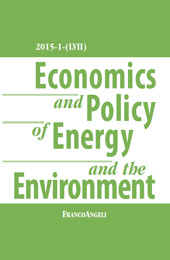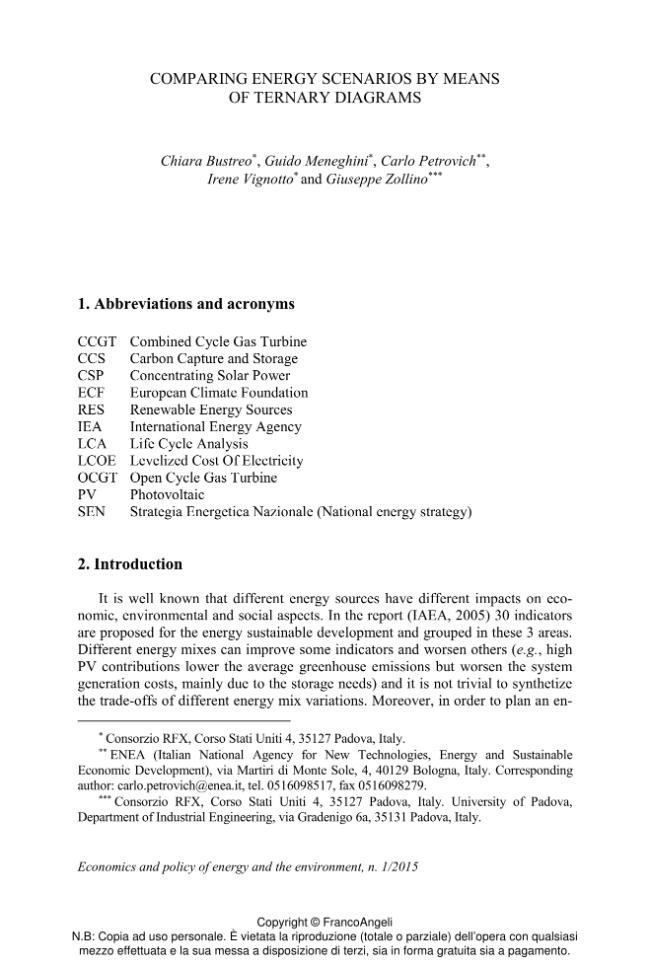Comparing energy scenarios by means of ternary diagrams
P. 71-87 p.
The use of ternary diagrams is here proposed as a straightforward means to show the relation between the electricity generating mixes and relevant scenario parameters, such as system carbon emissions (gCO2/kWh) and generation costs (câ¬/kWh). The effectiveness of the representation is improved by plotting contour lines inside the diagram to help the reader to identify the generation mixes that meet specific economic and environmental requirements. Along with the description of the potentiality of the ternary diagrams in the energy scenario field, an explanatory application is also reported. It demonstrates the helpfulness of the graph in performing preliminary assessments of specific energy policies. The levelized cost of electricity (LCOE) of a future (2030) Italian electricity generation system largely based on renewables - providing 50% of the demand - is plotted in a ternary diagram as function of the combination of different renewable electricity generation shares. The graph clearly shows that the che
ap.
est electricity can be achieved by an electricity generation mix that covers 20-30% of the electricity demand with wind power, 0-20% with photovoltaic (PV) and 10-30% with the other renewables. Further assessments demonstrate that the PV capacity should be limited so as to reduce the installation of expensive energy storage capacity while wind power along with electricity from biomass could effectively contribute in reducing the system LCOE.
-
Articles from the same issue (available individually)
-
Information
ISSN: 2280-7667



